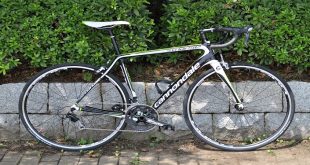Yes, you can put 700C wheels on a mountain bike; however, it is important to consider a few factors before making the switch. Mountain bikes typically come with larger diameter wheels, often 27.5 inches or 29 inches, to better navigate rough terrains.
700C wheels are commonly found on road bikes and are narrower and lighter weight, providing better efficiency on smooth surfaces. While it is possible to install 700C wheels on a mountain bike, it may alter the bike’s handling and affect its ability to handle off-road trails.
Additionally, the frame and brake compatibility should be checked to ensure a proper fit. Always consult with a professional or a bike mechanic for guidance before making any modifications.
Difference Between Mountain Bike And 700c Wheels
The difference between a mountain bike and 700C wheels lies in their unique characteristics and features. Understanding these differences is essential when considering whether or not to put 700C wheels on a mountain bike.
Understanding The Characteristics Of Mountain Bikes
Mountain bikes are designed to handle rugged terrains and off-road trails. They are equipped with features that make them suitable for adventurous rides through forests, mountains, and other challenging environments.
Key characteristics of mountain bikes include:
- Wide and knobby tires for improved traction on uneven surfaces
- Front and rear suspension systems to absorb shocks and impacts
- Sturdy frame and construction for enhanced durability
- Wide handlebars for better control and maneuverability
Exploring The Features Of 700c Wheels
700C wheels, on the other hand, are primarily found on road bikes and hybrids. They offer different advantages compared to mountain bike wheels and are optimized for smooth and fast rides on paved surfaces.
Key features of 700C wheels include:
- Larger diameter wheels for increased speed and better rolling efficiency
- Narrow and smooth tires that reduce rolling resistance and enhance speed
- No suspension systems as they are not generally needed on smooth roads
- Lightweight construction for improved agility and responsiveness
Highlighting The Fundamental Differences Between The Two
When comparing mountain bikes to 700C wheels, several fundamental differences become apparent:
| Mountain Bikes | 700C Wheels |
| Designed for rough terrains and off-road trails | Optimized for smooth and fast rides on paved surfaces |
| Wide and knobby tires for better traction on uneven surfaces | Narrow and smooth tires to reduce rolling resistance |
| Front and rear suspension systems for shock absorption | No suspension systems as smooth roads do not require them |
| Sturdy frame for enhanced durability | Lightweight construction for improved agility |
In conclusion, the decision to put 700C wheels on a mountain bike should be a carefully considered one. While it is possible, it is important to understand the fundamental differences between mountain bikes and 700C wheels, as they may impact the bike’s performance and ride characteristics. By analyzing the characteristics and features of both options, you can determine the suitability of 700C wheels for your mountain biking needs.
Pros And Cons Of Using 700c Wheels On A Mountain Bike
When it comes to upgrading your mountain bike, considering the use of 700C wheels can significantly impact its performance. While there are clear advantages to using these larger road bike wheels, it’s essential to weigh them against the drawbacks before making a decision. In this section, we will explore the benefits and drawbacks of using 700C wheels on a mountain bike.
Benefits Of Using 700c Wheels On A Mountain Bike
Using 700C wheels on your mountain bike can offer several advantages, making it a tempting upgrade option. Let’s dive into the specific benefits:
Increased Speed and Efficiency on Smooth Surfaces
One of the primary advantages of 700C wheels is their ability to provide increased speed and efficiency on smooth surfaces. These larger wheels allow for greater momentum, helping you glide effortlessly over flat terrain and asphalt roads. The increased rolling diameter translates to more distance covered with each pedal stroke, making your rides more efficient and giving you the ability to maintain higher speeds.
Improved Rolling Resistance and Less Effort Required
With 700C wheels, you’ll enjoy improved rolling resistance due to their larger circumference. This means you’ll need to exert less effort while riding, allowing you to go further with each pedal stroke. The reduced friction between the tires and the ground results in a smoother and more comfortable ride, making long-distance rides or commuting much more enjoyable.
Enhanced Compatibility with Road Bike Components
Another benefit of using 700C wheels on a mountain bike is the increased compatibility with road bike components. The standardized size of these wheels makes it easier to find and swap out components such as tires, tubes, and rims, broadening your options when it comes to customization and maintenance.
Drawbacks Of Using 700c Wheels On A Mountain Bike
While there are undeniable advantages to using 700C wheels on a mountain bike, it’s crucial to consider the drawbacks before committing to this upgrade. Let’s explore the potential disadvantages:
Limited Ability to Handle Rough Terrains and Obstacles
Due to their larger size, 700C wheels are not as well-suited for rough terrains and obstacles as traditional mountain bike wheels. The decreased tire width and lower volume make it harder for the wheels to absorb impact and maintain traction on challenging trails. If you primarily ride on rocky or technical terrains, the limited ability to handle these conditions might be a significant drawback.
Reduced Stability and Control on Uneven Surfaces
The larger circumference of 700C wheels can also result in reduced stability and control on uneven surfaces. The higher center of gravity can make the bike feel less stable, especially when negotiating tight corners or navigating through tricky sections. If you frequently encounter unpredictable off-road conditions, the decreased stability and control might affect your confidence and overall riding experience.
Potential Issues with Tire Clearance and Frame Compatibility
When considering the use of 700C wheels on a mountain bike, it’s crucial to ensure proper tire clearance and frame compatibility. The larger diameter of these wheels can sometimes pose clearance issues, especially when dealing with tight frame tolerances or the presence of suspension forks. It’s essential to evaluate your bike’s frame geometry and consult with a professional before making the switch to ensure proper fitment and functionality.
Considerations Before Converting A Mountain Bike To 700c Wheels
If you’re a mountain bike enthusiast looking to enhance your riding experience, you may have considered converting your trusty mountain bike to 700C wheels. While this conversion can potentially offer some advantages, it’s important to carefully evaluate a few key factors before making the switch. In this article, we’ll discuss the considerations you should keep in mind to determine whether converting your mountain bike to 700C wheels is the right choice for you.
Evaluating The Mountain Bike’s Frame And Fork
Before undertaking the conversion, it’s crucial to assess the compatibility of your mountain bike’s frame and fork with 700C wheels. Since mountain bikes are specifically designed for off-road conditions and often feature wider tires and stronger frames, not all frames are suitable for this modification. Meticulously examine your bike’s frame geometry and material to ensure it can safely accommodate the new wheel size.
Checking For Compatibility With 700c Wheels
Once you’ve assessed the frame and fork, you need to determine if your mountain bike’s components, such as brakes, and derailleur, are compatible with 700C wheels. Pay close attention to factors like axle diameter, spacing, and brake compatibility, which may vary depending on your bike’s original specifications. To ensure a smooth conversion, consult your bike’s manufacturer or a knowledgeable bike technician for guidance.
Assessing The Available Tire Clearance
Another critical consideration is the tire clearance of your mountain bike’s frame and fork. Generally, mountain bikes have ample clearance to accommodate wider and knobbier tires, which are essential for off-road traction. Converting to 700C wheels may lead to reduced tire clearance, limiting your ability to use wider tires. Consider the terrain you typically ride on and determine the minimum tire clearance required to maintain the performance you desire.
Understanding The Impact On The Bike’s Geometry And Handling
Converting to 700C wheels can have a significant impact on your mountain bike’s geometry and overall handling characteristics. The larger diameter of 700C wheels will result in a higher bottom bracket, altering the bike’s center of gravity. This change can affect your bike’s stability, cornering ability, and responsiveness. Carefully consider if these potential changes align with your riding preferences and if you are willing to adapt to the modified geometry.
Discussing The Effects On Steering And Stability
The conversion to 700C wheels can also impact the steering and stability of your mountain bike. Generally, larger wheels offer improved stability at higher speeds and better roll-over capabilities. However, they may also result in slower and less responsive steering, which can be undesirable in certain situations, such as technical mountain bike trails requiring quick maneuvering. It’s essential to weigh these effects and determine whether they align with your riding style and terrain.
Analyzing The Potential Changes In Riding Experience
Converting to 700C wheels will inevitably affect your riding experience. The larger wheels can increase your bike’s speed on flat and smooth surfaces, allowing you to cover more ground efficiently. However, this conversion may sacrifice some off-road capabilities, such as traction, maneuverability, and shock absorption. Consider your preferred riding style and the terrain you frequently encounter to evaluate if the potential changes in your riding experience are desirable or compromising.
Assessing The Desired Riding Style And Terrain
When it comes to determining whether converting to 700C wheels is suitable, it’s crucial to assess your desired riding style and the terrain you predominantly ride on. If you primarily ride on smooth roads or light trails and value speed and efficiency over technical off-road performance, the conversion may be beneficial. However, if your riding involves challenging trails, rocky terrains, or steep descents, sticking with mountain bike-specific wheels may be the wiser choice.
Determining If The Conversion Suits The Intended Use
Ultimately, the decision to convert your mountain bike to 700C wheels depends on the intended use of the bike. If you plan to use your bike primarily for commuting, bike-packing, or gravel riding, the conversion can offer advantages in terms of speed and versatility. However, if your main focus is mountain biking and tackling rugged off-road trails, sticking with traditional mountain bike wheels is recommended to ensure optimal performance and enjoyment.
Considering The Trade-offs Between Speed And Off-road Capability
It’s essential to consider the trade-offs between speed and off-road capability when contemplating the conversion to 700C wheels. While larger wheels can enhance speed and efficiency on smooth surfaces, they may compromise your ability to tackle technical trails or ride in challenging conditions. Keep in mind the trade-offs you are willing to make and determine if the potential benefits outweigh the compromises for your specific riding preferences.
Steps To Convert A Mountain Bike To 700c Wheels
Are you wondering if you can put 700C wheels on your mountain bike? Converting your mountain bike to 700C wheels can transform its performance and open up a world of new riding possibilities. However, there are a few important steps to follow to ensure a successful conversion. In this guide, we’ll walk you through each step, from choosing the appropriate wheelset to installing the new wheels and tires on your mountain bike.
Choosing The Appropriate 700c Wheelset
Before embarking on your mountain bike conversion, it’s crucial to choose the right 700C wheelset. Consider factors such as material, weight, and intended use. Aluminum and carbon fiber are common choices for wheelset material, with carbon fiber offering lighter weight but a higher price tag. Additionally, pay attention to the rim width and depth, as these factors can affect the tire’s fit and overall performance.
Selecting The Right Size And Width For The Mountain Bike
To ensure a successful conversion, it’s important to select the appropriate size and width for your mountain bike. Measure the fork and frame spacing to determine the compatibility with your chosen 700C wheelset. Pay attention to the axle type (quick-release or thru-axle) as well, as this can also impact the compatibility between the wheelset and your mountain bike.
Considering The Desired Tire Type (slick, Hybrid, Or Gravel)
Once you have selected the appropriate wheelset, it’s time to consider the type of tires you want to use. Determine whether you prefer slick tires for smooth urban riding, hybrid tires for a mix of pavement and off-road trails, or gravel tires for more adventurous terrain. Ensure that the tire type you choose aligns with the intended use and terrain you’ll be riding on.
Ensuring Compatibility With The Mountain Bike’s Components
When converting a mountain bike to 700C wheels, it’s essential to ensure compatibility with existing components. Check that the bottom bracket height, front derailleur, rear derailleur, and chainrings align with the new wheel size. In some cases, modifications or replacements may be necessary to ensure proper functionality.
Checking The Compatibility Of Brakes And Drivetrain
When transitioning to 700C wheels, it’s critical to ensure that your mountain bike’s brakes and drivetrain are compatible. Verify that the brake caliper reach is suitable for the new wheel size, and consider upgrading to long-reach calipers if necessary. Additionally, confirm that the chainline is compatible with the new wheel size to ensure proper shifting and smooth operation.
Evaluating The Need For Additional Adjustments Or Replacements
During the conversion process, keep an eye out for potential additional adjustments or replacements that may be needed. Factors such as frame clearance, fork rake, and chainstay length can impact the compatibility of the new wheelset. If necessary, consider making these modifications to ensure a seamless conversion.
Modifying The Frame And Fork If Necessary
In some cases, modifying the frame and fork of your mountain bike may be required to accommodate the new wheel size. This can involve widening the frame and fork spacing, filing or cutting out clearance for larger tires, or installing adjustable dropouts to accommodate different wheel sizes. Consult a professional or experienced bike mechanic if you are unsure about making these modifications yourself.
Adapting The Brake System To Accommodate The New Wheel Size
When transitioning from smaller mountain bike wheels to 700C, it’s crucial to adapt the brake system accordingly. Ensure that the brake calipers are properly aligned with the rim’s braking surface, and adjust the brake pads to ensure optimal contact and braking performance. Take the time to properly align and fine-tune the brake system before proceeding.
Adjusting The Frame Geometry If Needed
Converting a mountain bike to 700C wheels may result in slight changes to the frame geometry. Adjustments like increasing the fork offset or using a steeper stem can help compensate for these changes and maintain the desired riding characteristics. Keep in mind that these adjustments may vary depending on the specific mountain bike model and wheelset being used.
Installing The New Wheels And Tires
With all the necessary preparations and modifications made, it’s time to install the new 700C wheels and tires onto your mountain bike. Remove the old wheels and carefully mount the new ones, ensuring that the quick-release or thru-axle skewers are tightened securely. Pay attention to proper wheel alignment and centering as you install the wheels.
Properly Aligning The Wheels And Securing Them To The Frame
After installing the new wheels, check their alignment with the frame and fork. Ensure that the wheels are centered and aligned properly, and adjust as necessary using the appropriate adjustment points, such as dropout adjusters or disc brake caliper alignment. This alignment is crucial for optimal performance and safety when riding with the new 700C wheelset.
Mounting The Desired Tires According To The Terrain And Riding Style
Finally, mount the desired tires onto the newly installed 700C wheels, taking into consideration the terrain and riding style you intend to tackle. Whether you’re opting for slick, hybrid, or gravel tires, make sure they are appropriately inflated and securely mounted. This step completes the conversion process, leaving you with a mountain bike ready to conquer a variety of riding conditions.
Maintenance And Considerations For Riding A Mountain Bike With 700c Wheels
Regular Maintenance And Adjustments
Regular maintenance and adjustments are crucial when riding a mountain bike with 700C wheels. With the installation of these larger wheels, it is important to keep your bike in optimal condition to ensure a safe and enjoyable riding experience. This includes regularly checking and maintaining tire pressure, inspecting tread wear, and performing routine inspections for frame integrity and alignment. These simple tasks can help prevent potential issues and extend the lifespan of your mountain bike.
Checking Tire Pressure And Tread Wear Regularly
One of the key maintenance tasks when using 700C wheels on a mountain bike is to regularly check tire pressure and tread wear. Proper tire pressure not only ensures a comfortable ride but also impacts the bike’s handling and stability. It is crucial to refer to the manufacturer’s recommendations for the optimal tire pressure range. Additionally, keeping an eye on the tread wear helps to prevent any unexpected traction issues on off-road trails. Regularly inspecting the tires allows you to identify and address any wear or damage promptly.
Performing Routine Inspections For Frame Integrity And Alignment
Riding a mountain bike with 700C wheels requires paying extra attention to the frame’s integrity and alignment. The increased stress on the frame due to the larger wheels may lead to misalignment or potential damage. It is important to regularly perform routine inspections, checking for any signs of cracks, dents, or misalignments. Any issues should be addressed promptly to avoid further damage and preserve the bike’s overall stability and safety.
Adjusting Riding Techniques And Expectations
Adapting to a mountain bike with 700C wheels requires making adjustments to your riding techniques and expectations. The larger wheels affect the bike’s handling and stability, especially on rough terrains. It is essential to practice and refine your riding techniques, such as cornering, braking, and maneuvering, to achieve the best performance. Additionally, it is important to set realistic expectations regarding speed, agility, and overall off-road capabilities with 700C wheels.
Adapting To The Bike’s Altered Handling And Stability
Understanding the altered handling and stability of a mountain bike with 700C wheels is crucial for a comfortable and safe ride. The increased wheel size may result in a different feel and responsiveness compared to traditional mountain bike wheels. It is important to spend time getting accustomed to the bike’s new characteristics, including how it tracks over rough terrain and handles obstacles. Gradually adapting to these changes will enhance your overall riding experience and confidence.
Understanding The Limitations Of 700c Wheels On Off-road Trails
While 700C wheels can offer certain advantages on paved or smoother surfaces, it is essential to comprehend their limitations on off-road trails. The larger wheel size may reduce the bike’s maneuverability and make navigating tight and technical sections more challenging. Additionally, the decreased tire volume may result in reduced shock absorption and traction on rough terrain. It is crucial to consider these limitations and factor them into your riding style and choice of trails to ensure a safe and enjoyable off-road riding experience.
Exploring Additional Modifications For Optimal Performance
To optimize performance when riding a mountain bike with 700C wheels, there are various additional modifications you can consider. These can include upgrading components to enhance the overall riding experience, such as improving the drivetrain or braking system. Additionally, exploring tubeless tire setups can provide benefits such as improved puncture resistance and lower tire pressures for enhanced traction. These modifications can further enhance the performance and durability of your mountain bike.
Considering Suspension Adjustments Or Additions To Improve Comfort
Another consideration when using 700C wheels on a mountain bike is adjusting or adding suspension components to improve comfort. The larger wheels may transmit more vibrations and impact forces to the rider, potentially leading to increased fatigue. Considering suspension adjustments, such as tuning the fork or adding a suspension seat post, can help absorb these forces and provide a smoother ride. This can significantly enhance your comfort and enjoyment, particularly on longer rides or rougher trails.
Frequently Asked Questions For Can I Put 700c Wheels On A Mountain Bike?
Can I Put 700c Wheels On A Mountain Bike?
No, you cannot put 700C wheels on a mountain bike. Mountain bikes are built specifically to accommodate 26-inch or 27. 5-inch wheels, and the frame and fork may not have enough clearance for larger wheels. It’s best to stick to the recommended wheel size for your mountain bike to ensure proper performance and safety.
What Are The Benefits Of Using 700c Wheels On A Road Bike?
Using 700C wheels on a road bike offers several benefits. Firstly, they have a larger diameter, resulting in increased speed and better rolling efficiency on paved roads. Additionally, they provide better stability and handling, especially at high speeds. Furthermore, there is a wider selection of tires available for 700C wheels, allowing you to choose the most suitable ones for your riding style and conditions.
Will Replacing Mountain Bike Wheels With 700c Wheels Improve Performance?
No, replacing mountain bike wheels with 700C wheels will not improve performance. Mountain bikes are designed for off-road riding and require certain features like suspension, wider tires, and more rugged frames. 700C wheels are better suited for road bikes and won’t provide the necessary performance benefits on a mountain bike.
It’s best to stick with the appropriate wheel size for your specific riding needs.
Conclusion
To sum it up, while it is technically possible to put 700C wheels on a mountain bike, there are various factors to consider. Consider the frame clearance, tire compatibility, and intended use. It’s crucial to consult with a bike expert to ensure proper fit and functionality.
Remember, modifying your bike may impact its performance, so make an informed decision.
 AmFana Pedal through life's journey: Unchain the Adventure!
AmFana Pedal through life's journey: Unchain the Adventure!





